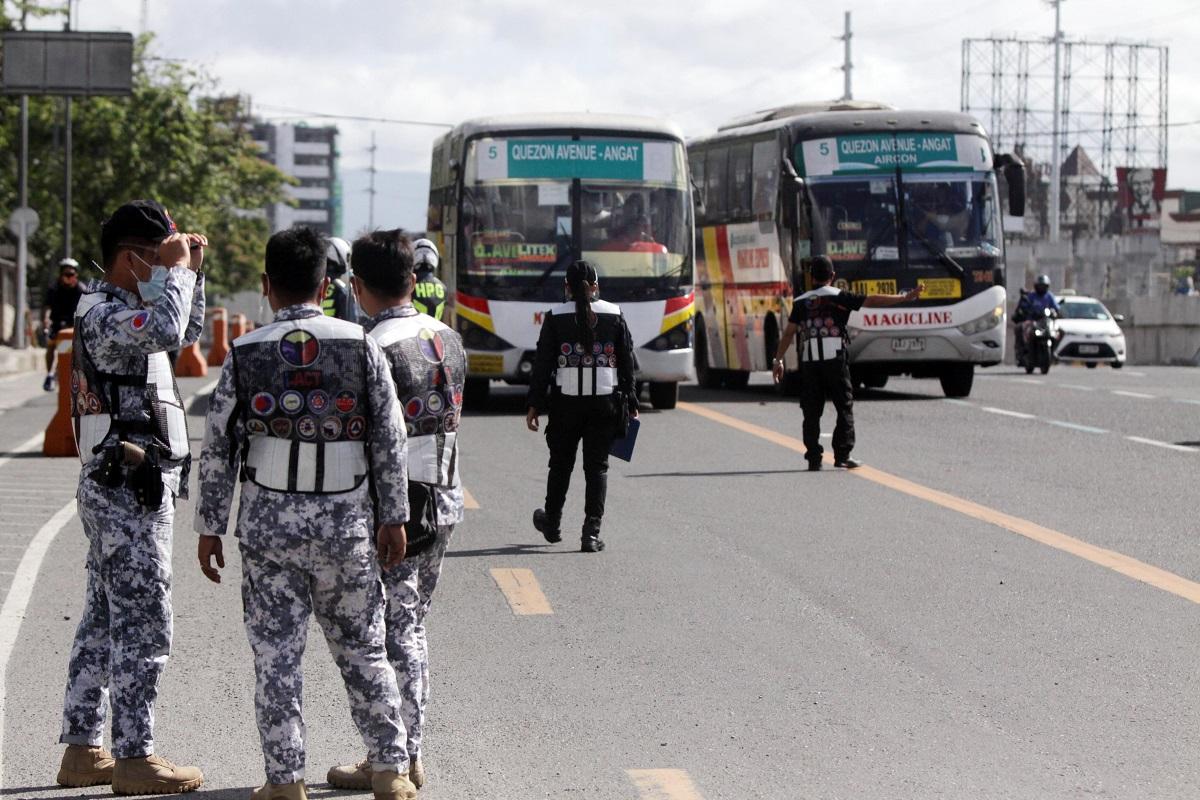Duterte’s economic managers trim growth targets amid ECQ in Q2

The Duterte administration’s economic managers have trimmed their economic growth target this year due to the reimposition of the strictest quarantine classification in the National Capital Region (NCR) Plus area, the country’s economic center, in the second quarter.
At a virtual press conference after the 179th Development Budget Coordination Committee (DBCC) on Tuesday, Budget Secretary Wendel Avisado read the DBCC’s joint statement on the review of the Philippines’ medium-term macroeconomic assumptions for 2021 to 2024.
“For 2021, the emerging gross domestic Product (GDP) growth projection is slightly adjusted to 6% to 7% from 6.5 to 7.5% in view of the emergence of new COVID-19 variants and the reimposition of enhanced community quarantine (ECQ) in the National Capital Region (NCR) Plus area during the second quarter of the year,” Avisado said.
NCR Plus—Metro Manila, Cavite, Laguna, Rizal, and Bulacan—had been under ECQ from March 29 to April 11.
The area was then placed under modified ECQ from April 12 to May 14. It is now under general community quarantine “with heightened restrictions” from May 15 to May 31.
The DBCC’s revised economic targets are in line with Bangko Sentral ng Pilipinas (BSP) Governor Benjamin Diokno’s earlier statement that the economic team will lower its gross domestic product (GDP) target to 6% to 7% “because of that recent closure of the economy due to the ECQ in NCR Plus.”
For his part, Socioeconomic Planning Secretary Karl Chua said the economy needs to grow by 10% starting in the second quarter until the end of the year to achieve at least a 6% growth, following the 4.2% contraction recorded in the first quarter.
Nonetheless, Chua said the recovery will depend on how fast the vaccination rollout will be so that the economy can safely reopen.
“Further, GDP is projected to return to pre-COVID-19 levels by growing at 7% to 9% in 2022, and will continue to grow by 6% to 7% in 2023 and 2024,” Avisado said, citing the DBCC’s revised target.
The Budget chief said that the country’s growth prospects and economic recovery will be underpinned by three interventions to arrest the spread of the virus and help the poor cope with the impact of the quarantines.
“First is the intensified implementation of the prevent, detect, isolate, treat, and recover (PDITR) strategy and the full vaccination of the residents in areas with the highest risk, such as the NCR Plus, Pampanga, Cebu City, and Davao City. By targeting these areas, COVID-19 transmission can be dramatically reduced throughout the country,” Avisado said.
“Second is the reduction of the gap from detection to isolation of COVID-19 positive cases from 7 to 5 days, such as the use of digitally-assisted contact tracing,” he added.
The Budget chief said this could potentially reduce cases by around 51%, citing epidemiological models.
“Lastly, around P170 billion would be needed to fund supplemental social support for those hardest hit by the pandemic as well as to fund improved health protocols. A version of this proposal is currently being deliberated in the Lower House, and is contingent on raising additional savings and revenues to remain deficit neutral,” Avisado said.
Fiscal program
The economic team, meanwhile, maintained the revenue target at P2.88 trillion for 2021 and P3.29 trillion for 2022.
As economic activities are expected to pick up over the medium-term, revenue collections are pegged at P3.59 trillion and P4 trillion for 2023 and 2024, respectively.
On the other hand, estimated disbursements for this year have been adjusted upwards from P4.66 trillion to P4.74 trillion, “owing mainly to funding requirements to support Bayanihan II,” including the procurement of COVID-19 vaccines, among others.
Disbursements are projected to reach P4.95 trillion in 2022, and will further increase to P5.11 trillion in 2023 and PhP5.40 trillion in 2024.
The estimated disbursements for 2022 to 2024 already take into account the proposed Growth Equity Fund (GEF), which will be established in line with the implementation of the Supreme Court Ruling on the Mandanas-Garcia case, Avisado said.
The GEF aims to assist poorer local government units (LGUs) in addressing the problems of marginalization, unequal development, and high poverty incidence.
Deficit
Given the revised revenue and disbursement program, the Budget chief said the deficit program is adjusted upwards to 9.4% of GDP and 7.7 percent of GDP for 2021 and 2022, respectively.
Avisado said the fiscal gap of 9.4% of GDP is equivalent to at least P1.855 trillion.
With this, Finance Secretary Carlos Dominguez III said that the ballooning budget deficit is “getting to be very concerning.”
Nevertheless, Avisado said the DBCC will continue to adopt a fiscal consolidation strategy to gradually bring the deficit back to pre-COVID-19 levels with a projected 6.4% of GDP rate in 2023 and 5.4% of GDP rate in 2024.
“The effects of the COVID-19 pandemic may remain in the short-term, but we are optimistic that the economy will return to its upward growth trajectory starting this year,” the budget chief said.
“This can be achieved through the accelerated implementation of the country’s recovery package and rollout of the national vaccination deployment to cover a broader segment of the population,” he added. — BM, GMA News




